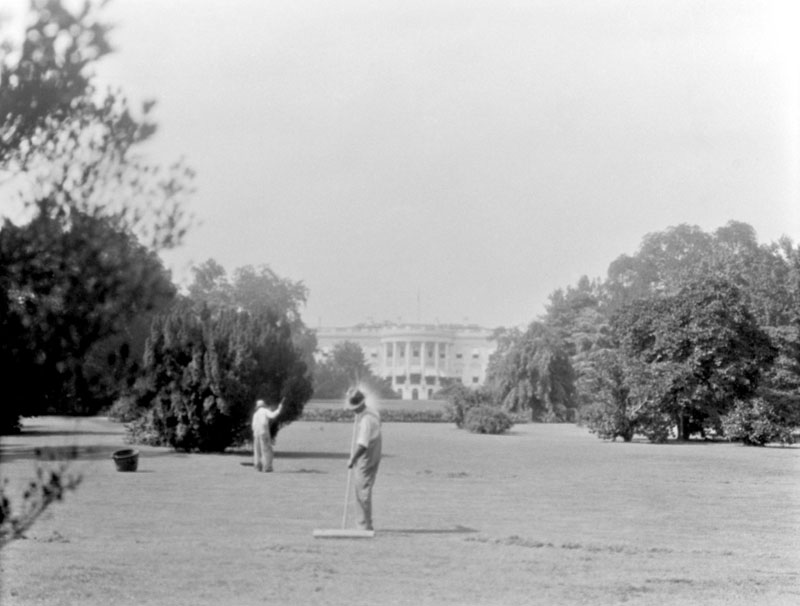


Framed or unframed, desk size to sofa size, printed by us in Arizona and Alabama since 2007. Explore now.
Shorpy is funded by you. Patreon contributors get an ad-free experience.
Learn more.

- Lost in Toyland
- And without gloves
- If I were a blindfolded time traveler
- Smoke Consumer Also Cooks
- Oh that stove!
- Possibly still there?
- What?!?
- $100 Reward
- Freeze Frame
- Texas Flyer wanted
- Just a Year Too Soon
- WWII -- Replacing men with women at the railroad crossing.
- Yes, Icing
- You kids drive me nuts!
- NOT An Easy Job
- I wonder
- Just add window boxes
- Icing Platform?
- Indiana Harbor Belt abides
- Freezing haze
- Corrections (for those who care)
- C&NW at Nelson
- Fallen Flags
- A dangerous job made worse
- Water Stop
- Passenger trains have right of way over freights?
- Coal
- Never ceases to amaze me.
- Still chuggin' (in model form)
- Great shot
Print Emporium
Sweeping the White House Lawn

Washington DC, c. 1920's. They are using push brooms. Why? I have no clue about this "activity." I imagine that the caretakers were just there in the way as my grandfather took this picture. View full size.
Bull rakes!
Those aren't push brooms; they're bull rakes. No kidding. A bull rake "head" is approximately 4" x 4" square with a single row of round wooden teeth (think dowel rods, the diameter of your thumb) protruding 2" to 6" from the bottom. The heavy head is intended to keep the teeth down on the ground, making raking easier. In my long-ago youth I saw bull rakes up to eight feet in width - a man's tool for a man's job. Bull rakes were most commonly used for raking hay (or other grassy crops like wheat) after it had been cut down by hand with a sythe. Look closely at this picture and you will see that some of the hand-mown grass has been bull-raked into long, low rows (called reaps), ready to be picked up with a pitchfork and tossed into a mule-drawn wagon. By the 1920s much of this ancient, labor-intensive drudgery had given way to steam and gasoline engine-powered tractors, with their attached mowers, rakes and balers. So why do we see men using bull rakes in this particular photograph? Well, do you see that stately mansion in the background? Before the days of air conditioning it was necessary for people in the White House to keep the windows open in the hot summer months. (And if you don't think it was hot when this photo was snapped, look at that hazy, humid sky. It sure looks like August in D.C to me!) Anyway, to save the President and his staff from being disturbed by the noise of motorized equipment, the grounds in those days were maintained by hand.
























On Shorpy:
Today’s Top 5